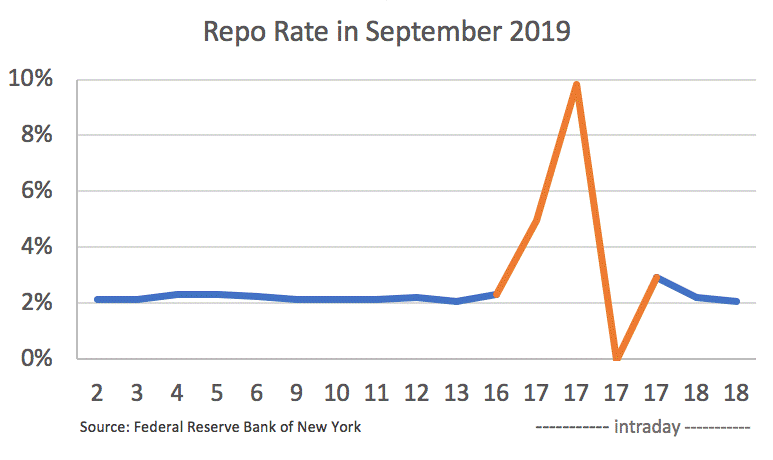9-25-2019
Oil and Financial Turmoil
Last week’s events show how fragile the global economy remains. The two events that shaped last week’s markets are the attack on Saudi Arabia’s oil installations and a massive cash injection by the Federal Reserve to bolster the liquidity of American banks.
Attack on oil
Saudi Arabia’s state-owned oil company, Aramco, had been planning an initial public offering (IPO) for the end of 2019. It was negotiating final details with international banks to list the world’s biggest oil company on the Riyadh stock exchange. However, a still unconfirmed international player, with the means to carry out a large-scale drone strike operation, sabotaged Aramco’s plans. The attack features 25 drones equipped with missiles and focused on two large Saudi Arabian oil production sites. The damage caused by this attack caused Aramco to shut down half of its daily oil production or 5.7 million barrels of crude oil per day. In terms of barrels per day, this has been the biggest shock the global oil market has ever suffered. See table Oil Supply Shock for details.
When financial markets opened the day following the drone attack, the global oil price immediately rose by 20%. The Saudi government blames its neighbor, Iran, for the attacks. So does President Trump who also used strong rhetoric to discourage further attacks. While his rhetoric helped oil prices to recover quickly, they also undermine stability in the Middle East, where most of the world’s oil is produced and tensions between Saudi Arabia and Iran are already very high. Most likely, further trouble is soon to come.
Liquidity Shortage
You have probably heard that the Federal Reserve lowered its federal funds interest rate by 0.25% to 1.75% from 2.00%, in order to further stabilize the U.S. economy. The Federal Reserve held a large press event on September 18th to make this change public.
However, the Federal Reserve did not widely announce another very important event. For the first time in a decade, the Federal Reserve had to inject cash into the short-term money market. The intervention was needed after the “repo” rate, the price at which American banks temporarily swap high-quality securities such as American government bonds for cash among each other, had climbed to a stunning 10%. See graph Repo Rate in September 2019 for details.
Normally, if one bank is in need of cash at the end of a day, it will approach another bank and borrow the required cash at the federal funds rate over night. However, since banks were running low on cash on September 17th, the repo rate rose dramatically, which triggered the Federal Reserve to intervene. It injected $53bn into the banking system on September 17th, and the following two days it interjected $75bn per day. On each day, American banks gobbled up all available funds. The last time the Federal Reserve had to inject money into the banking system like this was during the Financial Crisis of 2008. This type of development is a harbinger of bad news to come.
As an investor, it is your choice where and how you invest your money. We would like to introduce you to first deed lending, an asset class that provides excellent security and a high rate of return. Therefore, we encourage you to become a real estate lender.



